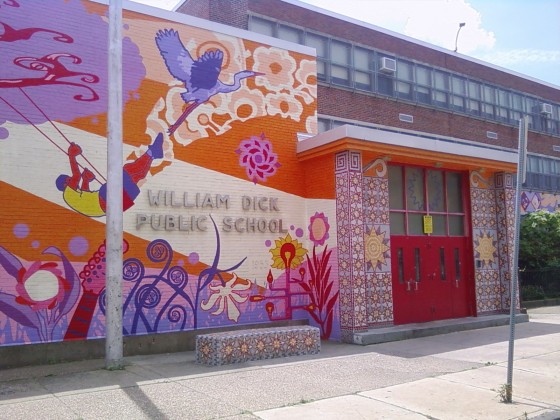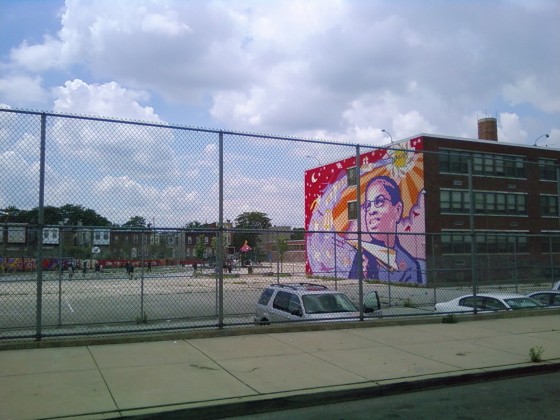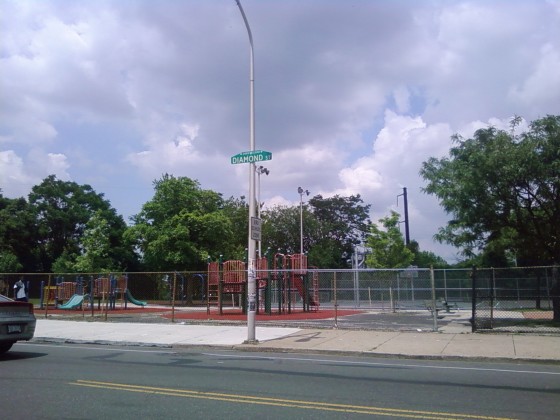In style, black will always be black. But around town, green is the new black at ten city schools and rec centers where blacktop will be transformed into new green space as part of a multi-city-agency collaborative initiative announced this month. It means a creative approach to creating needed accessible public green space.
Born of out of the mayor’s Green2015 Action Plan to create 500 acres of green space in the city by 2015, members from various city agencies celebrated the news with an event this month at the William Dick Elementary Schoolyard at 25th and Diamond Streets in North Philly.

Great mural
The budget for this program is about $9M, according to Patrick Morgan, chief of staff for the Parks and Recreation Department. Last year, partners from the Mural Arts Program, Water Department, Parks and Rec and The Trust for Public Land, asked the folks at PENN Praxis to devise an action plan to generate ideas about how new green space could be created. They found that almost 400 acres could be created by transforming all city blacktop spaces into green space, according to Morgan. (That’s not the plan, but it is interesting.) They also found the five areas with the least green space were East Oak Lane, North Philly, the former industrial areas in lower North Philadelphia, (Kensington and Fishtown), West Philadelphia and South Philadelphia. Or, in other words, just about everywhere but downtown, University City, and Chestnut Hill.

Dick schoolyard to be transformed
“It’s pretty damn meaningful,” said Morgan about the collaboration and the idea to bring new green spaces and new schoolyards with updated equipment and landscape design to schools where it is “most needed.”
The Philadelphia School District did not return our questions for comments, but we wonder if some of the schools chosen for this initiative might be the schools faced with an influx of students as the district closes some of its underutilized schools as part of its Masters Facility Plan, including eight this past March 29.
The Hank Gathers Recreation Center, next door to the William Dick schoolyard and Collazo Park, has also been designated for the transformation. The remaining seven locations are still unnamed and will be determined based on the success of the pilot.

Gathers Rec Center
–Lou Mancinelli
